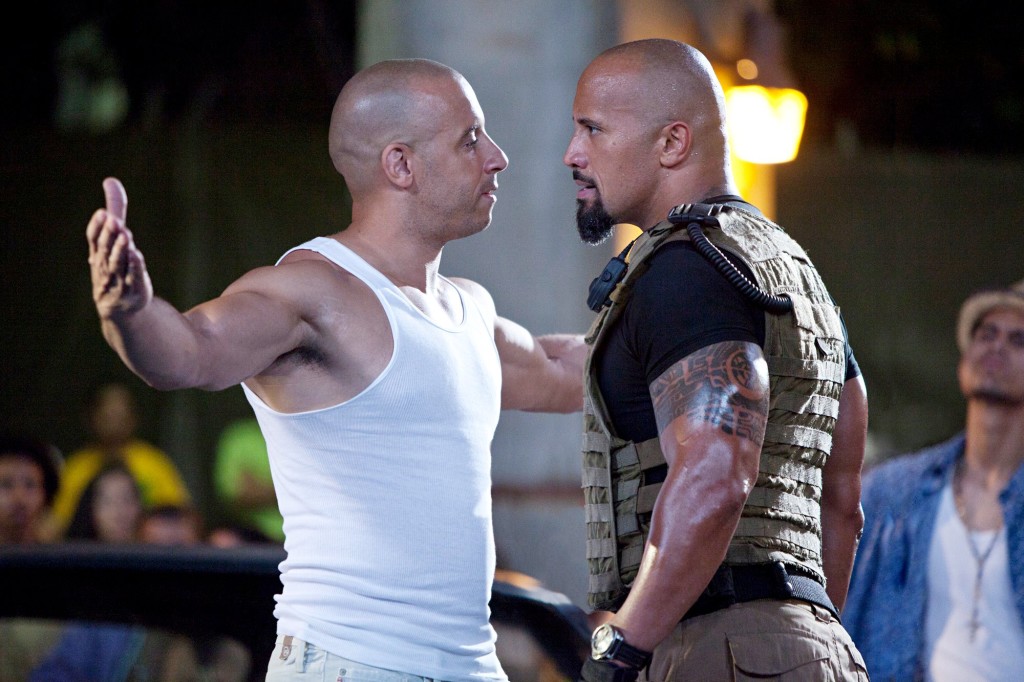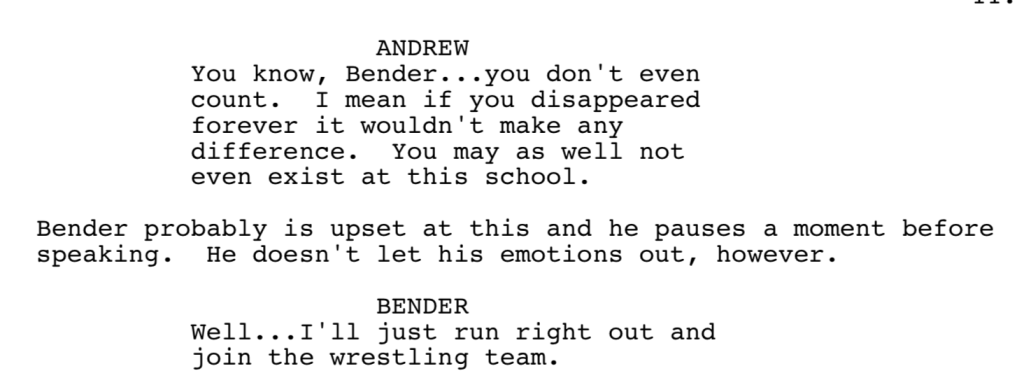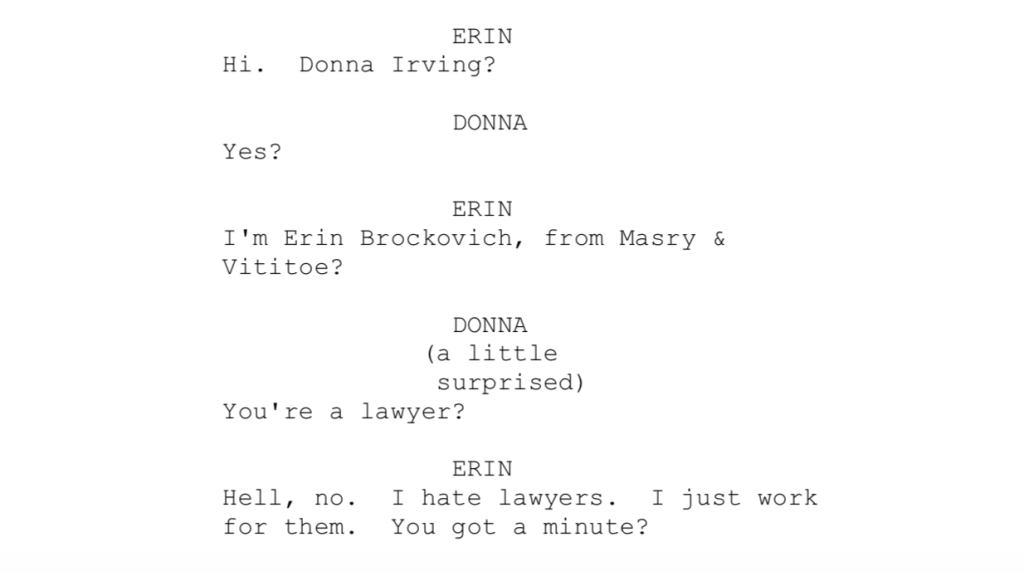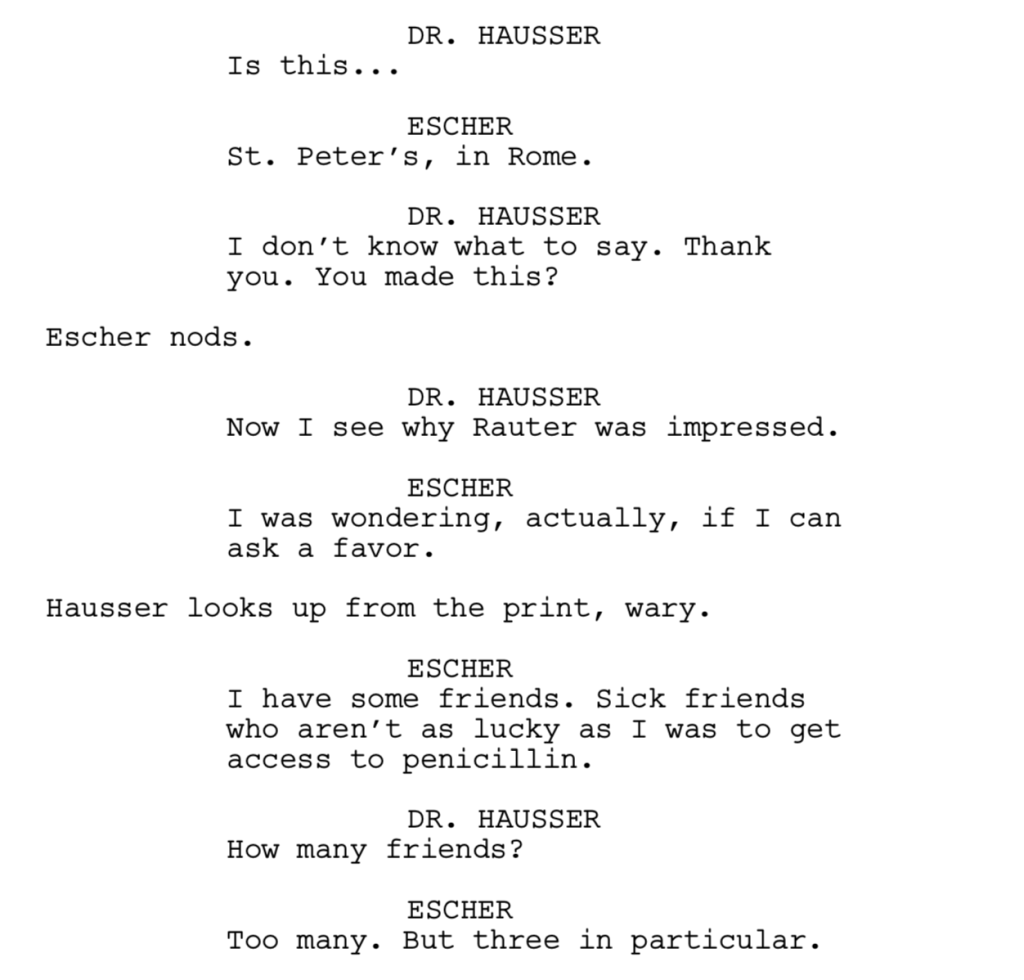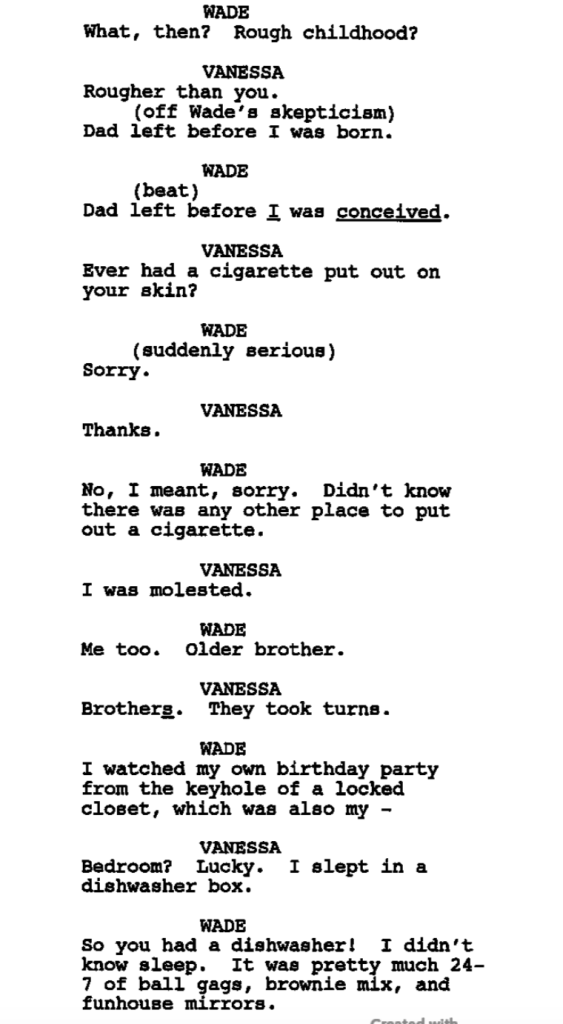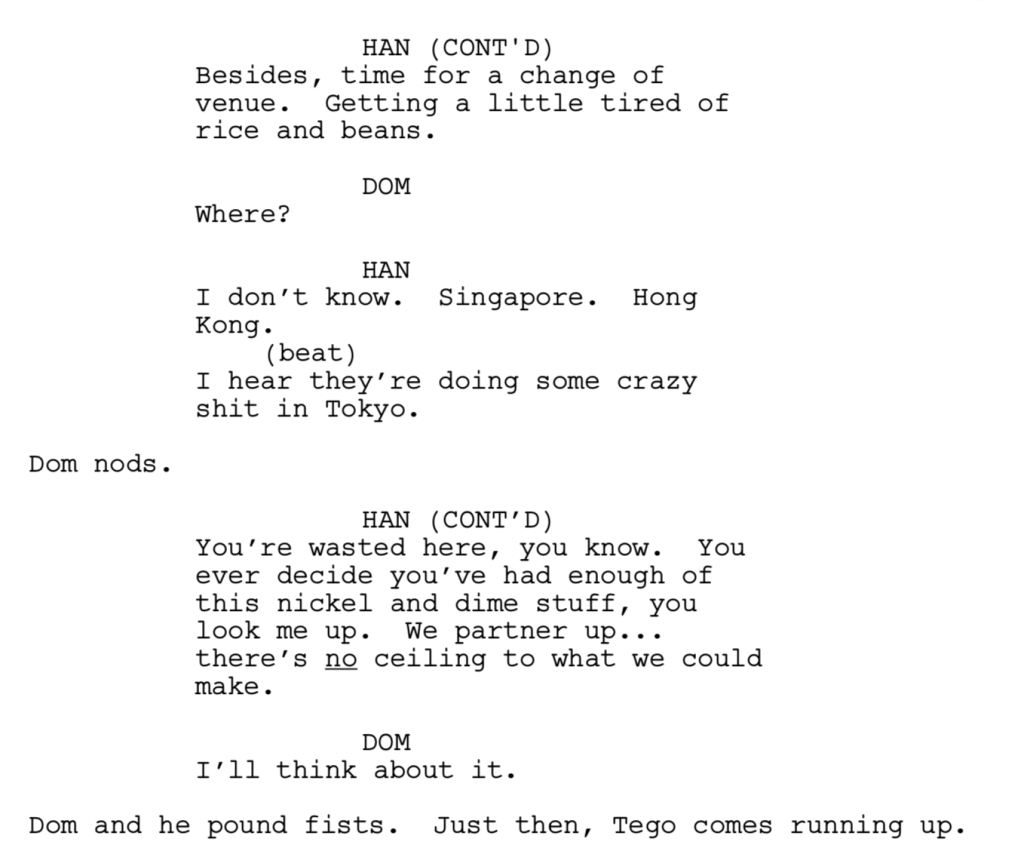So far in our Dialogue Series, we’ve talked about how to set up a scene for good dialogue. We’ve talked about the importance of adding personality to your characters, as that’s a driving force behind good dialogue. Today I want to talk about the kind of dialogue that makes me want to kill myself. Because I read it all the time. And if I can just steer screenwriters away from these two things, I can ensure that all the screenplays I read from now on will have 50% better dialogue. So what are these script-killers?
ON-THE-NOSE DIALOGUE
and
GENERAL DIALOGUE
On-the-nose dialogue is dialogue where the characters are speaking only to service the plot and the scene. It’s as if they have a direct line into the writer’s head and are making sure that they’re saying exactly what the writer needs them to say for the reader to understand what they’re thinking and what’s going on. On-the-nose dialogue is obvious and straightforward. “I am so tired this morning.” “You should sleep in.” “But I have the big meeting today.” “Oh yeah. I’ll cook you breakfast.”
On-the-nose characters speak like cave men. Whatever they’re thinking, they share it. This gives the entire conversation a false reality. The audience isn’t even sure why they’re so bored. Characters are speaking on the screen. Usually they like this. But nothing the characters are saying is interesting. And that’s because there’s no human element to the conversation.
What’s the human element? Well, for starters, humans rarely say what they’re thinking. If Jane shows up at work with a disastrous new haircut and asks her friend, Sally, what she thinks, is Sally going to say what she thinks? Probably not. Conversation is a dance where you’re balancing what you’re thinking against what you’re saying. And I think that’s what a lot of newbies get wrong. They have the character say what they think as opposed to considering how that character might present that thought once it goes through their filter.
Here, in The Breakfast Club, Andrew (the Jock) is mad at Bender (the Burnout) and lets him know it….
You can see that John Hughes even wrote it into the script. Bender wants to say something nasty. He’s angry. But instead of being a robot who conveys exactly what he thinks, he pretends that he’s unaffected and comes back with a jab. This is the human element. We think about what we’re going to say so that when we do say something, it frames us in the light that we want to be perceived in.
I can tell a writer is thinking “off-the-nose” (which is what you want!) when obvious questions are asked and non-obvious responses are given. Here’s a quick exchange in Erin Brokovich, where Erin is going to a woman’s house to get some information on the water scandal that’s hit the county.
I’ve read a hundred scripts where a character asks a question just like this. “Are you a lawyer?” And the on-the-nose response from the lawyer is, “Yes, do you have a moment?”
It should be noted that on-the-nose dialogue becomes harder to avoid the more heavily plotted your script is. If you have a ton of plot, then your characters will become mouthpieces for the plot instead of real people having real discussions. This was a problem with yesterday’s script, Escher, which had a lot of plot going on, so all the characters needed to say exactly what needed to be said.
I bring this up because on-the-nose dialogue is often a result of circumstance. You’ve created stories or situations whereby the characters have to say exactly what they’re thinking. This is why you want to leave enough freedom in your story to let your characters talk without the constraints of needing to convey a plot point every three lines.
To avoid on-the-nose dialogue, avoid logic. Logic is your enemy in dialogue. Try to be playful. You want to have fun with your characters as opposed to just asking and answering questions. And try to incorporate scenes where one character isn’t being completely honest with the other. Or is holding back on some truth or their feelings. Once you have characters who aren’t being 100% honest, it’s hard to write on-the-nose dialogue.
Let’s move on to GENERAL DIALOGUE. General dialogue is dialogue that is the bare bones generic version of what a character can say. For example, if a character is at Thanksgiving dinner and wants more mashed potatoes, he might say, “Can someone please pass me the mashed potatoes?” This is a perfectly acceptable thing to say in real life. But in a movie, the line is so generic, it’s invisible.
The way you battle general dialogue is through specificity and playfullness. You add words and phrases and angles that add flavor to the line. Your hungry character might nudge his sister and whisper, “Hey, snag me the mashed potatoes before Uncle Rick engulfs them.” It’s not a crazy better line. But it’s more specific. The word “snag” is a little different. “Uncle Rick” makes the line unique to the story. “Engulfs” is a slightly dressed up way of saying “eats.” How specific you get will depend on the character, the story, the situation, and the genre. This line wouldn’t work in, say, Schindler’s List. Let’s take a look at an exchange from Deadpool.
Notice how specific this dialogue gets, particularly towards the end with those last few lines. The two get into some pretty graphic experiences. Of course they’re not real, which makes the dialogue “off-the-nose,” and a solid example of everything I’m trying to teach in this post.
For the next exchange, we’re going to Fast and Furious 4. In the scene, Han is paying Dom for the job they just did…
Look at the specificity in the words and phases. “Skippin’ out?” “Simple economics. Profit’s drying up here.” “Getting a little tired of rice and beans.” “I hear they’re doing some crazy shit in Tokyo.” “This nickel and dime stuff.”
All that’s really happening here is that the writer is willing to play with words. That’s the attitude you want to have whenever you’re writing dialogue. Obviously, the extent with which you’ll play will depend on the scenario and characters. But even if it’s two stiff accountants sharing plot information, you should still find ways to play with the words so it doesn’t come out like two robots talking.
That’s the worst thing that can happen to dialogue. On-the-nose generic “just the facts ma’am” conversation. Throw in some off the nose specific dialogue – be willing to play with words and phrasing – and your dialogue’s going to get a lot better.
Yo, do you have a logline that isn’t working? Are those queries going out unanswered? Try out my logline service. It’s 25 bucks for a 1-10 rating, 150 word analysis, and a logline rewrite. I also have a deluxe service for 40 dollars that allows for unlimited e-mails back and forth where we tweak the logline until you’re satisfied. I consult on everything screenwriting related (first page, first ten pages, first act, outlines, and of course, full scripts). So if you’re interested in getting some quality feedback, e-mail me at carsonreeves1@gmail.com and I’ll send you a quote!

